To live effectively, you must have enough information - N Wiener
People's perception of the outside world is completely dependent on our sense of sight, hearing, touch, taste and smell. Under normal circumstances, 80% of our information is obtained through vision. The liquid crystal display(LCD), as the most important modern display device, is increasingly used in electronic products, becoming the interactive interface between people and equipment, and the most important tool for us to obtain information.
1888 Friedrich Reinitzer, a plant physiologist at the German University in Prague, Austria, discovered liquid crystal and its polarized light properties. Since then, various researches and applications of liquid crystals have been launched one after another. In 1973, Japan's Sharp Corporation used it for the first time to make digital display screens for electronic calculators.
The liquid crystal display is composed of two upper and lower glass sheets containing transparent electrodes (ITO electrodes). Oriented liquid crystal is sandwiched between the electrodes. Then stick a polarizer on the outside of the electrode. This is the basic structure of the simplest LCD display. On this basis, drive circuits, connection media, or backlight sources can be added to form a liquid crystal display module.
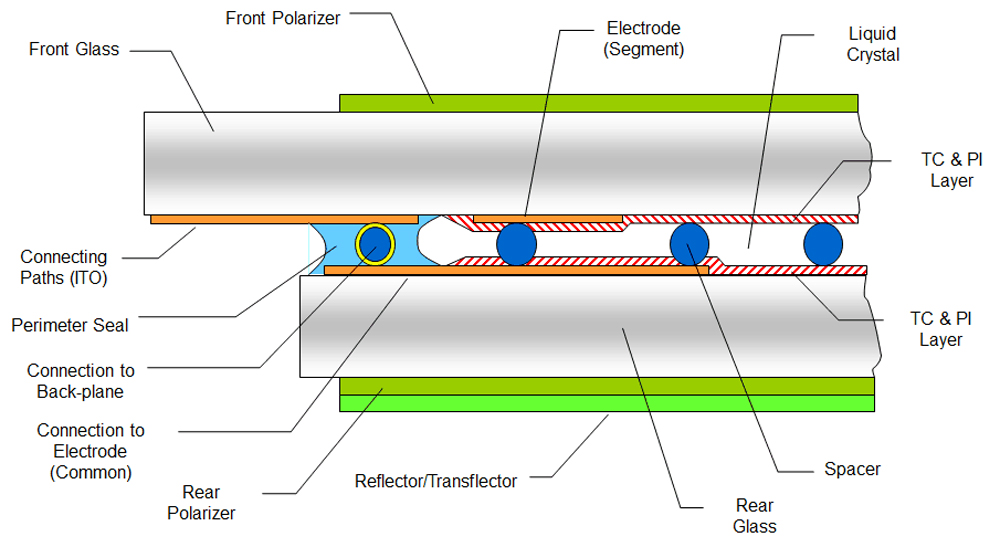
A) The role of polarizers.
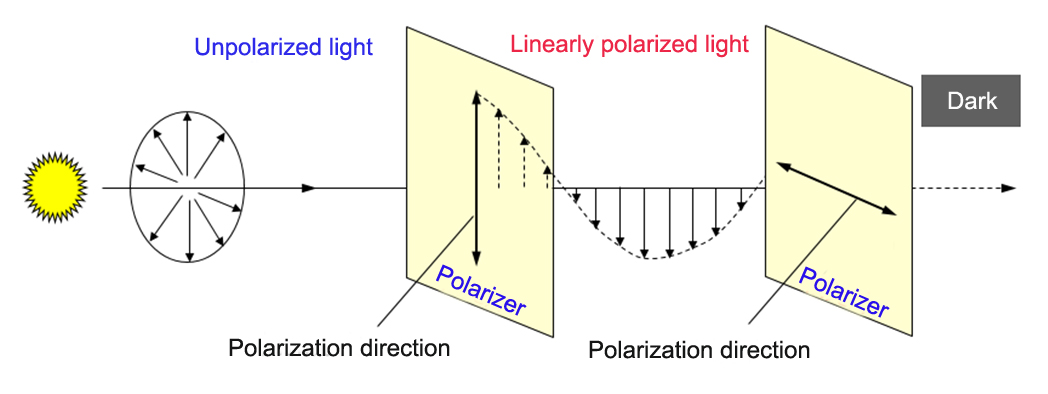
After the non-polarized light passes through the polarizer, the light in other polarization directions will be absorbed or reflected, and only the linearly polarized light with the same polarization direction as the polarizer will pass through. If at this time, there is a polarizer in front of the linearly polarized light that is perpendicular to the polarization direction of the linearly polarized light, then finally no light can pass through the polarizer behind, then it is a dark state.
B) The role of liquid crystal
The liquid crystal used in the liquid crystal display is Nematic liquid crystal.
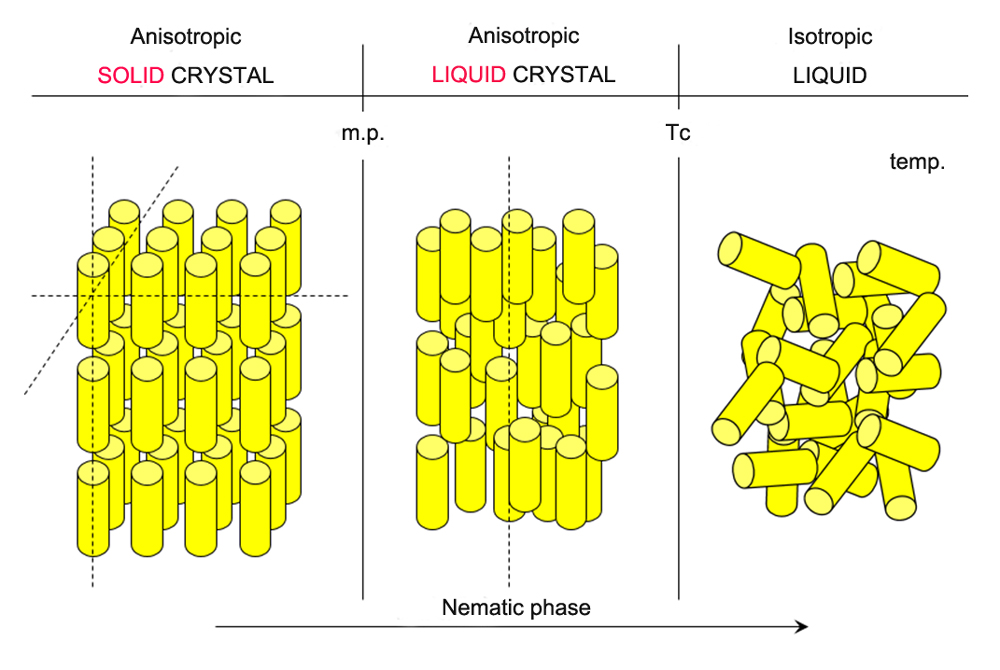
The phase alignment liquid crystal in the alignment layer will be twisted in the direction of rubbing alignment as shown on the left side of the figure below. After the light passes through a layer of polarizer, the unpolarized light becomes linearly polarized light, and the polarization direction of the linearly polarized light will then be twisted along the twisting direction of the liquid crystal molecules. Finally, the polarization direction is the same as that of the second layer of polarizer. At this time, the light can pass through, and it is not shown. If an electric field is applied between the transparent electrodes, the liquid crystal molecules will be aligned parallel to the direction of the electric field under the action of the electric field, and lose the function of changing the polarization direction of the light, so that the polarization direction of the polarized light reaching the second layer of polarizer is consistent with that of the polarizer. The polarization direction of the electrode is perpendicular to the dark state, and the pattern displayed by the electrode is displayed.
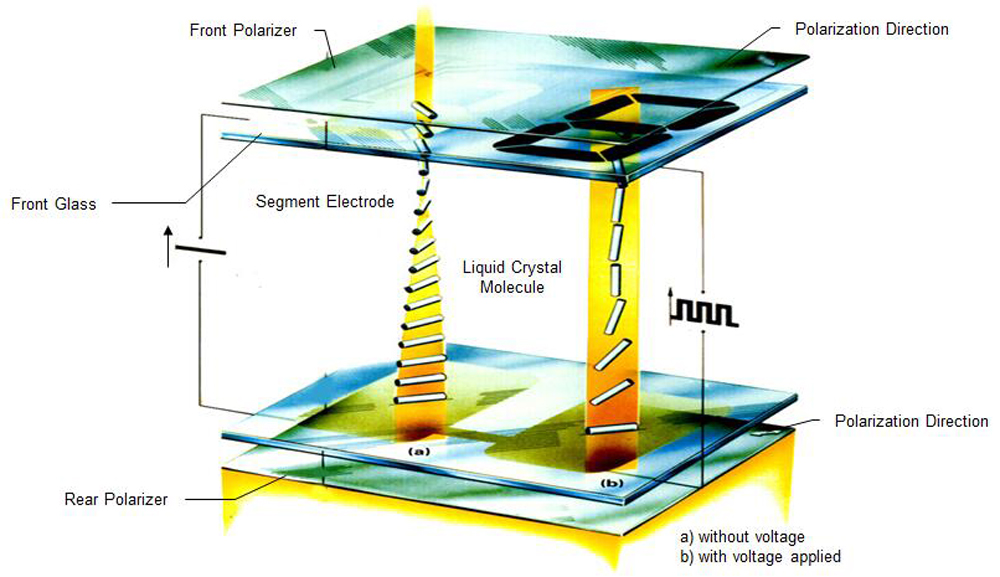
C) The way of electrode pattern
The basic figure of the electrode design of the display pattern is as follows:
The upper and lower graphics overlap, and the part that forms the electric field can be used as the display pattern. The other parts are pulled out as electrode control pins.
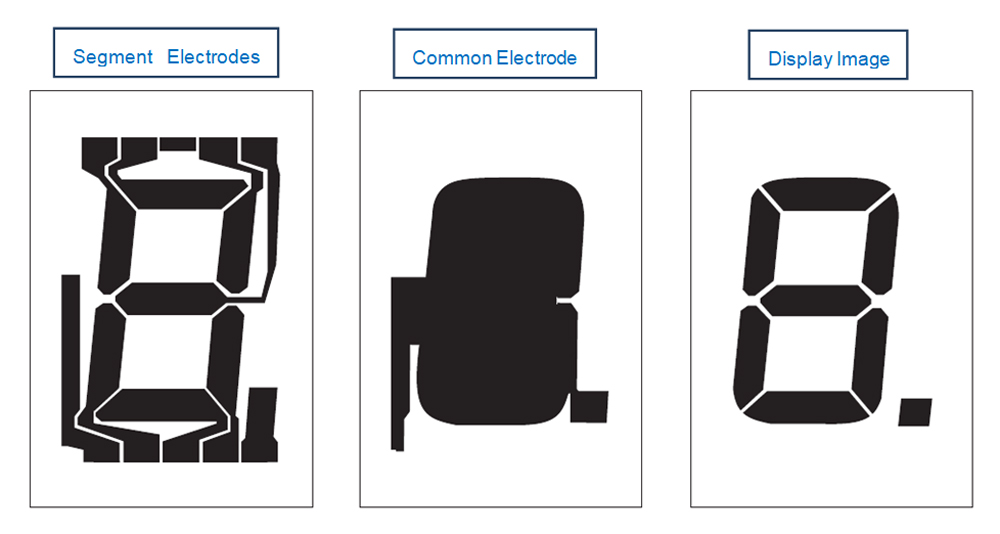
Generally speaking, broken code products display more with 7-segment "8" and other patterns. But because the displayed content is less variable. Even characters like "sinocrystal" cannot be clearly expressed.

Such graphics can only display relatively simple content. If you need to display complex content, you need a graphic design of dot matrix pixels.

The dot matrix pixels can be divided into character dot matrix and graphic dot matrix.
A commonly used character dot matrix is composed of 5*8 pixel dot matrix, as shown in the figure below:

The graphic dot matrix usually uses a multiple of 16 as the number of pixels in the dot matrix. This is because the 16*16 dot matrix can be used as a character for a more complicated text. The figure below is the application of Chinese characters in a 48*16 graphic dot matrix.
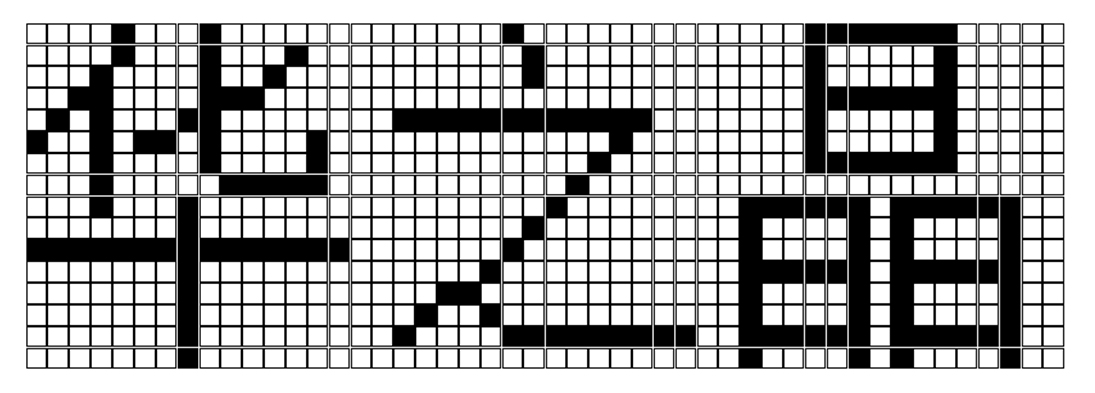
The in-depth study of the basic principles will inevitably bring about the prosperity and development of the industry.
Since its establishment in 2008, Huazhijing has worked in the field of liquid crystal display for ten years, and has in-depth understanding and research on the principles and manufacturing processes of products. So we can clearly know the pain points of customers, from product recommendation to product design and subsequent software and hardware support, as well as delivery after mass production, we can provide more professional services. Thanks to these advantages, our products have been widely used in industry, medical care, automobiles, home appliances and other fields.
The above is the display principle of the LCD display. How do you make such a complicated LCD? For related content, please refer to our article on product manufacturing.
As a LCD Display manufacturer, Sinocrystal would like to share you more related information if you are interested. Email us as you want.
The 8 inch displays might be affected and delay for an accident.
New iPhone 13 Series will use On-Cell OLED Displays. And it that will be launched in the second half of this year will be exclusively supplied by Samsung Display (SDC)
This is the project management of how sinocrystal handle your customized project relate to displays.
Discover the key factors to consider when choosing an LCD display for your project, including size, resolution, interface, brightness, and customization options from a factory-direct manufacturer.
Discover the latest innovations in rugged LCD displays for harsh environments — from extreme temperature resistance to sunlight readability and waterproof designs. Factory-direct manufacturing with full customization.
A complete guide to LCD display connection methods, including SPI, I2C, RGB, MIPI, LVDS interfaces and physical mounting options. Learn how to connect monochrome and TFT LCDs to your development board or product housing.
This week, we had the pleasure of hosting an esteemed international client at our LCD display manufacturing facility in Dongguan. Guided by our team, the client visited key production areas such as the fully automated COG bonding line, backlight assembly area, full lamination workshop, and final product aging test section. They highly appreciated our production capacity, strict quality control, and engineering expertise. This visit strengthened mutual trust and set the stage for future collabora